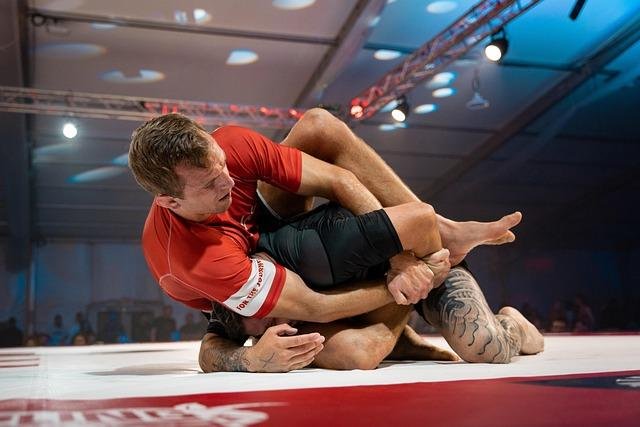In the rapidly evolving world of Brazilian Jiu-jitsu, the debate between Gi and No-Gi competition formats has taken center stage, reshaping the landscape of the sport. Once seen as distinct disciplines, these two styles now influence one another, driving innovation and attracting diverse practitioners worldwide. As tournaments increasingly feature both formats,athletes and coaches grapple with new strategies and training methodologies. This article explores how the dynamic interplay between Gi and No-Gi is transforming modern Jiu-Jitsu competitions, reflecting broader trends in martial arts and athletic performance.
Table of Contents:
- Gi and No-Gi Dynamics Reshape Competitive Strategies
- The Impact of Attire on Technique and Tempo in Jiu-Jitsu
- Training Adaptations for success across Both Modalities
- Expert Recommendations for Navigating Modern Competition Formats
- Key Takeaways
Gi and No-Gi Dynamics Reshape Competitive Strategies
Modern Jiu-Jitsu competitions are witnessing a profound shift as athletes adapt their approaches based on whether they compete in Gi or No-Gi formats. The presence or absence of the traditional Gi considerably affects grip strategies and control techniques, prompting fighters to innovate their skill sets accordingly.In Gi competitions, the fabric itself becomes an extension of one’s arsenal, offering unique leverage points but also demanding meticulous focus on grip strength and precision.Conversely, No-Gi matches emphasize speed, fluidity, and transitional agility, encouraging competitors to prioritize dynamic movement and explosive counters without the added texture of the Gi.
These contrasting environments have given rise to new training regimens and strategic mindsets, shaping how athletes prepare mentally and physically. Key distinctions influencing competitive tactics include:
- Grip Engagement: Enhanced manipulation in Gi versus reliance on underhooks, wrist control, and body positioning in No-Gi.
- Pace and Tempo: Structured and methodical exchanges in Gi juxtaposed with faster, scramble-heavy action in No-Gi.
- Submission Pathways: Chokes leveraging collar grips in gi; joint locks and swift submissions favored in No-Gi.
As a result, athletes are increasingly cross-training and developing hybrid techniques to remain competitive across both styles, signaling an evolutionary blend that’s redefining Jiu-Jitsu’s competitive landscape.
the Impact of Attire on Technique and Tempo in Jiu-Jitsu
Attire directly influences how practitioners approach technique execution in jiu-jitsu. The traditional gi, with its reinforced collars and durable fabric, facilitates a wide array of grips and control options, encouraging strategic pacing and precision. Competitors can latch onto sleeves and lapels, enabling slower, methodical setups and complex positional maneuvers.Conversely, training or competing without the gi, commonly referred to as no-gi, removes these grip points, demanding faster hand fighting and less reliance on fabric-based leverage.This shift compels athletes to adapt by emphasizing explosive takedowns,swift transitions,and a more dynamic style.
The tempo of matches is equally altered by the clothing worn. Gi bouts tend to exhibit a measured tempo, where athletes engage in a chess-like battle of grips, grips breaks, and positional control, often extending exchanges. Meanwhile, no-gi interactions are hallmark fast-paced affairs, driven by stripping grips and rapid scrambles that prioritize speed and conditioning. Key tactical differences include:
- Gi: Focus on grip control, intricate setups, and robust positional play.
- No-Gi: Emphasis on hand fighting, quick positional changes, and relentless pace.
Training Adaptations for Success Across Both Modalities
Athletes aiming to excel in both Gi and No-Gi formats must embrace a versatile training approach that blends traditional discipline with dynamic fluidity. The tactile feedback of the Gi demands precision grips and meticulous control techniques, while No-Gi emphasizes speed, sprawling, and explosive transitions. Developing muscular endurance and grip strength through targeted resistance exercises is crucial for managing the rigorous demands of gi competitions. Conversely, enhancing cardiovascular fitness and agility becomes paramount for the fast-paced environment of No-Gi matches, requiring practitioners to condition with high-intensity interval training (HIIT) and functional drills that simulate match scenarios.
Cross-training strategies are gaining momentum, enabling athletes to bridge the technical gap between both styles.Incorporating the following elements is essential for a holistic preparation:
- Grip variation drills: to strengthen both palm and Gi-specific grippers
- Positional sparring: focusing on transitions between Gi and No-Gi grips and controls
- Explosive takedown work: honing quick entry without reliance on the Gi fabric
- Recovery and mobility exercises: to withstand the intense range of motion and reduce injury risk
Expert Recommendations for Navigating Modern Competition Formats
To excel in contemporary jiu-jitsu competition formats, practitioners must adapt their training to address the distinct demands of both gi and no-gi styles. Experts emphasize the importance of developing a versatile game plan that integrates the grip-based control of gi with the swift,frictionless transitions characteristic of no-gi. Mastery of grip fighting, combined with explosive scrambling techniques, provides competitors with a tactical advantage. Additionally, conditioning tailored specifically for each format enhances endurance and reaction time, allowing athletes to maintain peak performance throughout intense match sequences.
Recommendations for competitors include:
- Engaging in cross-training sessions that alternate between gi and no-gi to build adaptability
- Focusing on positional awareness to exploit rule variations and referee interpretations
- Incorporating scenario-based drills to sharpen decision-making under pressure
- Prioritizing mobility and flexibility work to navigate dynamic transitions with ease
- Regularly reviewing competition footage to analyze evolving meta-strategies and common pitfalls
Key Takeaways
As the landscape of Brazilian Jiu-Jitsu continues to evolve, the dynamic rivalry between Gi and No-Gi formats remains at the forefront of modern competition. Each style brings its own unique challenges and strategies, shaping the sport’s development and attracting diverse athletes worldwide. Whether practitioners favor the traditional grip-and-control techniques of the Gi or the fast-paced, submission-focused approach of No-Gi, it is clear that both disciplines will continue to drive innovation and excitement in the Jiu-Jitsu community. As competitions grow increasingly diverse and inclusive, the ongoing dialogue between these two forms promises to redefine the future of the sport for years to come.

